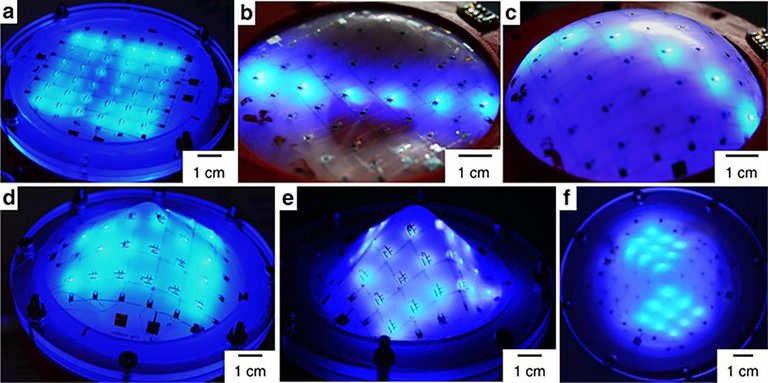Scientists at the TU Ilmenau have succeeded in making globally unique advances in nanotechnology in the so-called "stretchable" assembly and interconnection technology. The research results obtained at the Nanotechnology Group under the direction of Professor Heiko Jacobs were published in the renowned journal "Nature Communications".

In their article "Integrated multilayer stretchable printed circuit boards paving the way for deformable active matrix", which appeared in the scientific journal Nature Communications, the researchers from TU Ilmenau describe a printed circuit board that, like rubber, can be deformed in any direction.
The trick: the circuit board is not limited to just one metallization layer, but consists of several layers. The team led by Prof. Heiko O. Jacobs has thus succeeded for the first time in the world in producing a multilayered stretchable electronic circuit board. Equipped with a distributed transistor matrix, this allows the electrical control of individual points on the surface of the matrix, which makes it possible to produce a wide variety of three-dimensional shapes.
The published results were produced as part of the project "Expandable Packaging Technology: Fabrication, Assembly, Fundamental Investigations and Applications", which is funded by the German Research Foundation (DFG). For six years now, scientists at TU Ilmenau have been researching stretchable electronics, known in specialist circles as "metamorphic electronics" due to their elasticity. It combines far more complex properties and qualities than conventional, rigid electronic systems, which always have the same shape, and thus paves the way to new applications.
Ilmenau researchers coin term of "stretchable electronics
The term "metamorphic electronics" has since been coined worldwide by Prof. Jacobs' team. It has published papers in renowned publications, for example on a microphone matrix that can transform into a sphere, in spherical form, on a spherical touchpad and on stretchable and inflatable light structures.
The insights gained may soon find application in new electronic systems. Just as electronic components have become an integral part of our daily lives and can be found in practically all areas, this will undoubtedly apply even more to metamorphic electronics in the future. Professor Jacobs: "Essentially, all electronic products that we know can be transformed into stretchable, adaptable and formable geometries and thus new products can be developed. Companies interested in collaborating are welcome to contact us to get innovative developments off the ground together."
To the article:https://www.nature.com/articles/s41467-019-12870-7

